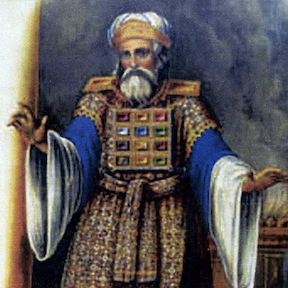Crystals through Time
Crystals and precious stones are often used by people to heal trauma, treat ailments of mind and body, and protect them against negative energy. It seems to have been true for many years, even if it just became more popular recently. But who started this practice?
The first recorded use of crystals was by the ancient Sumerians, one of the first civilizations, who used crystals in their magical healing formulas and for inlays in their finest artwork. Lapis Lazuli and Serpentine were a couple of their favorites.
Egypt too is an ancient civilization with a rich history of using crystals for many purposes. Egyptians used them mainly for protection and good health, often in the form of jewelry. Quartz, Emerald, Lapis Lazuli, Carnelian, and Turquoise were some of the most popular stones. Egyptians of all classes, both male and female wore lots of jewelry. Amulets were often made to protect the wearer, in life and especially in death. Jewelry was usually made with a specific purpose such as protection of health, warding off evil spirits, and bringing good luck. Those who made the jewelry had to follow strict rules regarding the magical properties of certain colors, shapes and materials.
Egyptians prized Lapis Lazuli more than gold. It was used in making heart scarabs, which were placed on the heart of the deceased in burial to protect the heart in death. It was also crushed and used as make-up, along with Malachite. Galena was ground up into the famous eyeshadow called kohl. Garnet was used to promote good health and for protection. Malachite was used to line the headdresses of pharaohs to help them rule wisely and promote inner visions. Carnelian was worn to purify the blood and relieve pain.
Ancient Greeks were the ones who coined the actual word ‘crystal,’ from (krustallos) meaning “ice” or “rock crystal” because they believed that Quartz crystals were water that had become eternally frozen. They used Amethyst amulets to prevent drunkenness and hangovers and the word Amethyst means ‘not drunken.’ Hematite is associated with the Greek god of war, Aries, and soldiers would rub it all over themselves before battles to make themselves invulnerable. Sapphires, whose name comes from the Greek word ‘sapphirus’ meaning blue, were a favorite among the kings and priests of ancient Greece due to their association with purity and wisdom.
In ancient China, Jade was valued so highly by the culture that they had their own written characters in the language. Some emperors were buried in jade armor, and even with jade horses. Jade symbolized moral integrity and purity. It was believed to have kidney-healing powers as well. Jade was carved into all types of objects, including jewelry, ornaments, ritual tools and even chimes. Jade was even used to seal the orifices of bodies for burial! Men were seen as virtuous for having Jade ornaments on their desk and in their homes.
The Native Americans have always had a deep respect for crystals and their use in healing. Much of their history is lost now because traditions were passed on orally from generation to generation, and many of the languages have been lost over time as the native populations have been decimated by genocide. The Native Americans saw the crystals as powerful tools given by the Earth, which were to be used carefully, respectfully and only by those who knew how to use them properly. Turquoise was known as the stone of the sky - created by rainwater mixed with tears of joy that has sunk into the Earth. Many tribes used Turquoise in all types of ceremonies and rituals, to bring rain, for protection, and even as a currency.
What we now call birthstones originated from the Book of Exodus. The Breastplate of Aaron was a sacred object worn by the High Priest of the Israelites in order to communicate with God. This breastplate had in it twelve different stones, “one for each of the names of the sons of Israel,” and they were arranged in a square worn across the chest. When the first academic research was carried out by a roman scholar, a list of the stones was compiled from his findings - the first list of “birthstones” was created. Before the 17th century, people wore the stone of each month during that month, rather than wearing their personal birthstone all year.
Crystals and stones play many more roles throughout different religions. One issue with these ancient stones is that there was no accurate way to classify stones before the 1500s. Stones were named according to color a lot of the time and there is no sure way to know what many stones’ names meant when they come up in ancient texts. For example “Carbuncle” is the name for all red gems in the Bible, but could also refer to Coal. In the Koran, the 4th Heaven is made of ‘Carbuncle.’ The Hindu Vedas, the oldest and most sacred of Hindu texts, describe the powers and healing properties specific to different crystals and gemstones.
The earliest known use of crystals dates back 30,000 years to the first amulets made of Baltic Amber - though there are no records to tell us how they were used at that time. Today crystals have become popular again as healing and spiritual tools but they also run our computers, keep our time, power our electronics and so much more. Crystals are part of your heritage, your everyday life, and they will bring us into the future too.











